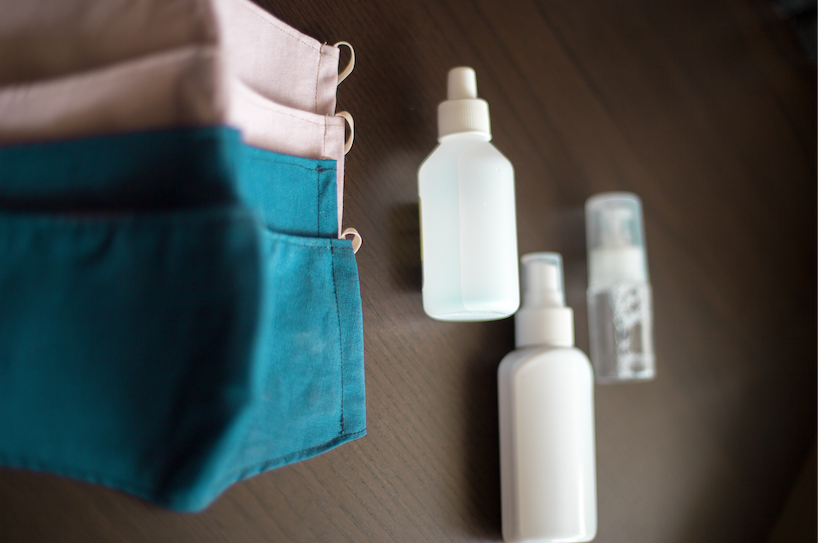![]()
Many families, out of an abundance of caution, are cutting back on their Thanksgiving celebrations due to the coronavirus pandemic. College students, however, must brace for impact as they crash at home after a grueling semester.
On Nov. 24, John Brown University students will exit the bubble of mostly lower-risk 18- to 22-year-olds, and many will enter spaces with older and at-risk household members. While the risk of traveling during the coronavirus pandemic cannot be completely mitigated, there are steps students can take.
Rob Rostoni, COVID Student Care Coordinator, recommends that students monitor their activities 14 days before leaving campus. “Be sure to distance at least six feet & wear a mask as much as possible to avoid exposure (and bringing COVID home). Consider this when on campus, shopping, work, visiting friends, avoiding large crowds, etc. This helps you, your roommate(s) and those you come in contact with,” Rostoni said in an email. “If you develop symptoms, contact Nurse Rhonda at rhostler@jbu.edu.”
If students test positive before Thanksgiving, the university will work with them on a case by case basis. If you feel sick, contact Rob Rostoni at rrostoni@jbu.edu or Rhona Hostler at rhostler@jbu.edu. COVID-19 symptoms, according to the Centers for Disease Control, include fever or chills, cough, shortness of breath or difficulty breathing, fatigue, muscle or body aches, headache, new loss of taste or smell, sore throat, congestion or runny nose, nausea or vomiting and diarrhea.
When asked about student testing before departure, Rostoni stated that testing is advised if “one has known exposure or symptoms” or “if one is going home to a household with at-risk people.” Recommended testing locations in Siloam Springs include the Community Physicians Group Clinic on Holly Street and the Community Clinic on Mount Olive Street. For testing at JBU, there are limited criteria, mainly that a student has to have known exposure or symptoms, Rostoni stated.
As students scatter from campus, they will be traveling in cars and through airports, putting them in contact with more people. The CDC, while stating that travel “increases your chance of getting and spreading COVID-19,” recommends getting a flu shot, wearing a mask if using public transportation, keeping a distance of at least six feet from others and washing one’s hands often. For those traveling abroad, the CDC divides countries into categories based on high, moderate, low, very low and unknown risk. To view this list, visit www.cdc.gov/coronavirus/2019-ncov/travelers/map-and-travel-notices.html.
While heading home, Rostoni encourages the following:
- Be sure to have a tight-fitting mask (KN95 if traveling on a plane or public transportation) & hand sanitizer (at least 60% alcohol).
- Try to avoid touching surfaces, use hand sanitizer often and avoid touching your eyes, nose and mouth.
- Cover your coughs and sneezes as much as possible.
- Distance yourself 6+ feet as much as possible.
- Do not share snacks, food, drinks, etc.
- Wear disposable gloves or use hand sanitizer after pumping gas.
- Avoid eating in restaurants along the way. Consider bringing food or drive-through.
- If driving with others, wear masks and have windows open for ventilation.
In regard to quarantining upon one’s arrival home or wherever a student is staying, Rostoni said, “We recommend being cautious of your interactions when returning home. Manage your mask usage and distancing as much as you can.” Other advice Rostoni gives for living at home during the break includes evaluating sleeping arrangements if you share a room with an at-risk household member, considering wearing masks in common areas, keeping visitors low, cleaning surfaces often, avoiding sharing bathrooms and separating yourself from sick household members.
After the extended break and holidays, students will return to Siloam Springs in February, ready to reunite with friends and start the spring semester. Rostoni recommends that students take the same precautions on their journey back. “Please limit higher risk social gatherings two weeks prior to returning on campus,” Rostoni said. “If there is a possibility of exposure or COVID-like symptoms, get tested before coming onto campus. Non-rapid test results can take 3-5 days.”
Photo courtesy of Unsplash





